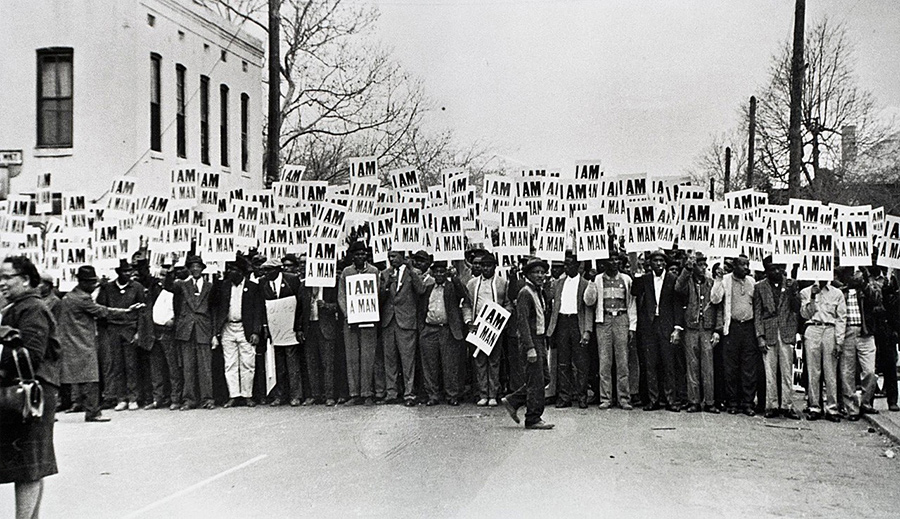Submitted by: anselmbe
Tagged: sports , FAIL , gifs , soccer , tricks Share on FacebookShared posts
madebyabvh: Animated Doctor HooOriginal Illustration by M.Dyer
"I’ve noticed this often while in a phone/video conference when someone has an open mic and..."
- Why does hearing your voice echoed back to you while speaking seem to de-rail your train of thought? : askscience
"A candid look at the burgeoning punk rock scene in South Korea, focusing on the club and the bands..."
- Amazon.com: Our Nation: A Korean Punk Rock Community: Stephen Epstein and Timothy R. Tangherlini: Movies & TV
Harvest Time (winter is coming)...
billtronThe game is a big hit.
It Was Big Weekend For Teen Heartthrob Race Relations
By Joseph Lamour
Did everyone have a nice weekend? If you’re in the States, perhaps you enjoyed the invigorating spring weather we’ve been having on the East Coast. Or, maybe you were on the other side of the country in Indio, CA, taking in sets by Action Bronson, Yeah Yeah Yeahs, or Jessie Ware (my favorite). If that was the case, then you were at Coachella, the three-day music bonanza, and I’m jealous. Jealous… of most of you. Nick Jonas? Not so much.
Justin Bieber, either, but, we’ll get to that in a moment.

Joe Jonas (left) and Nick Jonas (right).
Image via Beautiful Ballad.
Nick Jonas (pictured above with his brother Joe) was photographed wearing a shirt silk-screened with the message “I AM A MAN.” A little refresher for those who are unfamiliar: The term “I AM A MAN,” as seen on Nick’s shirt, is from The Civil Rights Movement–essentially, it’s a statement that refutes calling a black male “boy,” a well-known pejorative for African American men. The statement was made famous by images of men marching during the Memphis Sanitation Strike in 1968. The term actually has an even longer history: in 1787, Josiah Wedgewood, a British abolitionist and artisan by trade, created a cameo design with a drawing of a slave, and above him was the question, “Am I not a man and a brother?” This became one of the lasting symbols of the abolitionist movement. Almost 200 years later, it was revised as a rallying cry from black men working under policies that were racist and unsafe.

Memphis Sanitation Strike, 1968
via But Does It Float
A loyal reader and fan of the site sent us this Nick Jonas tip (which we love, by the way), and she was quite angry about it…and initially I was angry, too, but when I showed the picture to my family and explained what the term meant, they didn’t understand why it was offensive. My father asked whether it was, in fact, a show of solidarity and support, since the anniversary of the end of the Memphis strike is on Tuesday.
Good question, Dad.
The reason why I was initially angry is because it seems like a Jonas brother is co-opting a phrase that isn’t and wasn’t directly his struggle. But, why not support civil rights? You don’t have to be black to do so, of course. An interest in racial justice by white men and women is a big step in the right direction, right? But, then again, is it a show of racial solidarity to wear a shirt to a three-day outdoor hotbox? Or does it just mean like he liked the way it looked with those confetti-colored shoes he’s wearing? What would you say if Britney Spears was papped wearing a shirt with Martin Luther King’s face on it to go get a caramel frappucchino and a bag of Cheetos? How would you react if, while shopping on Rodeo Drive, Zoe Saldana wore a Balenciaga shift under an Anne Frank tee? Is there a t-shirt for everything? Is there a difference between those things and what an occasional guest star of Married to Jonas did? What if he wore it on that show?

“Am I Not a Man” Cameo by Josiah Wedgewood
An interesting thing to think about as well is the fact that supporters of abolition wore the original “Am I not a man and a brother” design–and it became something of a fashion trend. Wedgewood’s friend and abolitionist campaigner, Thomas Clarkson, recounts:
“Ladies wore them in bracelets, and others had them fitted up in an ornamental manner as pins for their hair. At length the taste for wearing them became general, and thus fashion, which usually confines itself to worthless things, was seen for once in the honorable office of promoting the cause of justice, humanity and freedom.”
Yeesh, Thomas Clarkson, way to put fashion plate down.
So is what Nick Jonas did any different than what has already happened centuries ago? The only difference I see is that black people couldn’t really participate in the fashion trend back then, because we were mostly… you know… enslaved.
So, let’s switch gears to Nick Jonas’ brother-in-arms, Justin Bieber. Take a deep breath and look at this image:

Screenshot via Facebook.com.
The caption, from the Anne Frank House, says:
“Yesterday night Justin Bieber visited the Anne Frank House, together with his friends and guards. Fans were waiting outside to see a glimpse of him. He stayed more than an hour in the museum. In our guestbook he wrote: ‘Truly inspiring to be able to come here. Anne was a great girl. Hopefully she would have been a belieber.’ Tonight Bieber will give a concert in Arnhem in the Netherlands.”
As you may imagine, this alleged guestbook entry by The Beebs did not sit well with, basically, anyone. I mean, there were gossip bloggers working on a Sunday. All with the right amount of snark. Here are some of the best responses in the comments of Anne Frank House’s post on Facebook:
She would’ve been a WHAT? That little idiot is way too full of himself. She’s an important historical figure so show some respect.
“People hate on him because of his fame.” No, people hate on him because he does stupid crap like this.
He obviously has no idea who this remarkable young girl was or what she achieved and gave us in her short life. I would love to know how she would describe him in her diary… she did have a vivid way of describing people.
There are a few defending him–but most do not–and those three comments each have 600-1700 likes at the time of this article’s writing. I put in the last comment because it’s the reason I’m not inclined to give him the Jonas pass I gave earlier. To raise your musical career to the honor of (arguably) the most lasting symbol of The Holocaust? Reducing her to one girl in his legion of fans? It’s reprehensible. This all may have been interpreted differently if he was still the sweet-faced kid that Usher scouted from YouTube. Actually, the sweet face he still has, but he’s no longer a child. He should know better. I suspect he does: the last seven words of an otherwise innocent statement is delivered a little bit like an arrogant pie to the face. And isn’t that that why this stings so badly? That what he said (at least until his Victorian doll looks fade) is pretty likely? This completely and totally humble moment in history involves someone who had the power to move a country’s midterms for his concert. And he didn’t even ask.
What these two weekend warriors share is the fact that they’re both singing white boys with enormous bank accounts. What they also have in common is that they are followed by so many impressionable minds. Nearly all of their fans’ brains are still gestating. One may not realize the scope of his reach, and one knows all too well. Was it right for Bieber to align himself in the same thought as Anne Frank? (Just to be clear–that’s a capital N-O from me.) I’m sure he knows by this point everything he does is shared with the media. And even if this wasn’t public knowledge, what kind of person writes something like what he did after an hour of thinking about The Holocaust? Well… a person who thinks his ability to get tween hearts beating could survive genocide.
So what say you about this week in teen heartthrob race relations? If Nick, knows his status as a role model, and he wore his “I AM A MAN” shirt for a good reason, good for him, I say. What I think however: if he was showing support, he would say something to a reporter at some point, wouldn’t he? There’s still time…maybe he will. And maybe Justin will apologize. Is it too cynical to say he probably won’t? I mean, even if he does, it will be an emotionless statement released by a publicist while Bieber is off hanging with Lil’ Twist. Whether these famous boys like it or not, they’re role models. All famous people are, in a way. It’s up to them whether they want to use that pull for good or to inflate their ego.
The Rickey home.When I was 2 or 3, we lived in a house next door in what may have been a schoolhouse at one time.Some loggers were cutting timber on the hill and using oxen to drag the timber down the hill.Something scared the beast because the were charging down the hill with the loggers running behind them screaming behind them yelling and screaming.The oxen had a chain dangling behind them and it got tangled in the fence and as they raced along,it plopped each post out.That may be where "Strong As An Ox Started "
billtronMore from my grandfather, who is using the release of 42 as an opportunity to share his connection to Branch Rickey.
C O N V E N I E N T .


C O N V E N I E N T .
The Sounds of Anti-Anti-Essentialism: Listening to Black Consciousness in the Classroom

Image by Flickr User Pere Ubu
 In teaching the many interrelated and complicated aspects of the Civil Rights movement, Black Power, and the Black Arts Movement, the challenge for me is to help students understand the “facts” of this period, and to simultaneously destabilize the teleological historical narrative these “facts” seem to suggest. In a pedagogical context, sound helps fill in the gaps that fall outside of the knowledge produced–and contained within–certain archival accounts of black cultural and political history. While crucial, having students listen to the gaps, can be daunting, especially in our current historical moment, as the decades-long push against identity politics has been solidified by the recent (re)election of the nation’s first black president, Barack Obama. This point demands more elaboration than I can provide here, but the critical pedagogical issue it raises within the province of black studies, is that it is becoming increasingly difficult to consider black political culture outside of the sedimented lines of American pluralism and black radical thought.
In teaching the many interrelated and complicated aspects of the Civil Rights movement, Black Power, and the Black Arts Movement, the challenge for me is to help students understand the “facts” of this period, and to simultaneously destabilize the teleological historical narrative these “facts” seem to suggest. In a pedagogical context, sound helps fill in the gaps that fall outside of the knowledge produced–and contained within–certain archival accounts of black cultural and political history. While crucial, having students listen to the gaps, can be daunting, especially in our current historical moment, as the decades-long push against identity politics has been solidified by the recent (re)election of the nation’s first black president, Barack Obama. This point demands more elaboration than I can provide here, but the critical pedagogical issue it raises within the province of black studies, is that it is becoming increasingly difficult to consider black political culture outside of the sedimented lines of American pluralism and black radical thought.
I use sound as a pedagogical tool to help outline a middle ground–what Frantz Fanon refers to in The Wretched of the Earth as “zone of hidden fluctuation” (166)–based upon articulations of resistance and identity that refuse to be frozen in time. Building on Paul Gilroy’s conceptualization of anti-anti-essentialism in The Black Atlantic, an idea of black consciousness that is flexible and moves between the insufficient terms of “essentialist” and “anti-essentialist,” I use specific pedagogical examples to suggest that teaching about race and sound is a rich, evolving, and productively interactive continuum. The auditory sense opens up new terrains of knowledge and dynamically expands the possibilities for students to think through the intricate and multifaceted formations of black consciousness during the volatile years of the 1960s and the resonance of those years in our present.
The recorded presence of Martin Luther King, Jr., for example, represents an important aural site for engaging in reflexive pedagogy, because King’s tonality–the resonance of his voice–creates a certain familiarity and is pivotal to the construction of the American myth of the radical transformation of the civil rights movement and the idea of post-civil rights racial equality. For many students, King’s sound signals the dream of, and the pathway towards, a unified America. Conscious of how this idea of King reflects a linear understanding of civil rights as simply a desire for inclusion, I direct students’ attention to the sound of King’s last recorded speech in Memphis on April 3, 1968. Given the evening before his assassination, this speech resounds with King’s deepening critical perspective on black struggle through its haunting concluding notes. I point out to my classes that King’s final years (1965-1968) were marked by his increasing focus on ideas of black resistance outside of the Civil Rights mainstream, including his critique of U.S. involvement in the Vietnam War, and his radical rethinking of the possibilities for black economic and political self-determination.

Martin Luther King in 1968, Image courtesy of UIC Digital Collections
Centered on the economic injustice and dehumanization of Memphis’s striking black sanitation workers, King’s speech details the need for the Memphis black community do more than simply boycott municipal entities, but rather articulate their resistance by boycotting prominent national brands such as Wonder Bread and Coca-Cola. Against this background, I play segments (particularly the final minutes) of King’s speech, entitled, “I’ve Been to the Mountaintop.”
The acoustic dimensions of King’s final speech resonate with a social and political complexity that troubles the sonic memories many students have of King’s “I Have a Dream” speech, delivered on the steps of the Lincoln Memorial in 1963. The much more intimate and less overtly majestic soundscape of Memphis’ Mason Temple underlines King’s shift from national icon back to local, community activist. The frequent audience shifts–applause, extemporaneous interjections, and silence–create a reverberating sonic energy that accumulates throughout the speech. Rather than relying strictly on a call-and-response interpretation of the interactive exchanges between King’s voice and the audience’s response, I have students consider the non-linear ebbs and flows in King’s sound in this latest of moments (as Fred Moten would say, the totality of King’s tonality). For example, as King’s audience considers the weight of his analyses and what it means to articulate black resistance as “a dangerous unselfishness” that “puts pressure where it really hurts,” I identify moments of uncertainty, hesitation, and contemplative reflection that mark a non-linear interactive sonority between King and his audience.
Listening to King’s final thoughts offers a disturbing and disruptive emphasis on the stakes of breaking with entrenched modes of activist thinking. He concludes the speech with a series of prophetic thoughts on mortality as a cost of making a stand against “our sick white brothers.” Set within the historical and ideological context I have sketched above, the delivery distinguishes the sound of King’s words. As we listen I draw attention to King’s expression of a lack of fear in anything, any man, as King seems to convey an eerie foreknowledge of his murder and his irreverence in its face.
“I’ve Been to the Mountaintop” –Listen to the concluding two minutes
The apocalyptic sound of King’s concluding notes to this political sermon leaves much to contemplate. From the mention of the potential threat posed to his life by “our sick white brothers,” through the speech’s last line, there is a tonal, timbral shift in his voice and demeanor. Through sound and posture, and the reaction of the audience to those factors, King’s affect seems to convey something more momentous occurring beneath the event’s surface dynamics. King projects a confrontational edge through the sound of fearlessness in the face of mortality. Did he know he was going to be killed shortly after giving this speech? It’s a question that the peculiar tonality of his concluding lines raises for students. If so, what does it mean to use the sermon as a site of prophetic, aural documentation of the fact that a force of transformation exists beyond the flesh and blood of leadership, a force that assassination can’t kill? In the speech’s final synesthetic moment, I have the students listen and watch the shift that occurs in King’s demeanor as he closes, and the way that this shift culminates in an almost ecstatic moment as he delivers the final line: “Mine eyes have seen the glory of the coming of the Lord.” His defiant turning away from the microphone is crucial as it amplifies the meaning of the voice, letting those watching know that, much like an emcee, King has just “served” white power with a delivery that will outlast the sniper’s bullet the following evening.

Nina Simone, Image courtesy of Flickr User GlingG
I want to briefly point to two other examples that show additional ways in which sound complicates ideas of racial identity and expression during the 1960s. When I teach Nina Simone’s composition, “Mississippi Goddamn,” (recorded live at Carnegie Hall in 1964), I ask students to consider the relationship between the distinctive sound of her voice and the ironic and critical elements of her lyrical meaning as this interaction creates a complex idea of radical black consciousness. Composed in the aftermath of the murder of Medgar Evers and the bombing of the 16th Street Baptist Church in Birmingham, Alabama, Simone offers a musical, and more broadly sonic meditation on white supremacy.
Most students find the timbre of Simone’s voice, its grain (as Roland Barthes would say) and depth, immediately striking. Her unique sonority and its context, greatly influence attempts by students to understand her reference to the song as simply a tune: “The name of this tune is Mississippi Goddamn” she says, and “This is a show tune, but the show for it hasn’t been written yet.” Clearly it isn’t simply a tune, and the caustic quality of lines such as, “Oh but this country is full of lies/ You’re all gonna die and die like flies,” creates a critical depth through the sound of Simone’s commitment to a black radical perspective. What does it mean, for instance, that Simone projects such sarcasm and biting critique to a predominately white audience at Carnegie Hall? How might we hear the specific grain of her voice in this setting? How does Simone’s projection of critical black sonic resistance, emerge at the conjuncture of anti-black racism and the beginning of legislative efforts under the Johnson administration to rectify racial inequality through civil rights bills? What can be taken from the simultaneity and contrast that Simone projects her sound within? I pose such questions to my students as a way of considering what it means to be committed to critical thought and social transformation that falls outside of the dominant lines of American national consciousness, and how the sound of such commitment, heard in the pitch and tenor of Simone’s voice, matters as a different kind of historical documentation.
In considering how the sound of music can offer an intervention within the formation of black political consciousness in the Black Arts Movement, I often use the 1966 recording of Amiri Baraka’s signal poem, “Black Art,” as it set to the experimental musical sounds of Sonny Murray’s ensemble (Murray-drums, Albert Ayler-tenor saxophone, Don Cherry-trumpet, Henry Grimes, Lewis Worrell-bass). Having first read the poem, students then are able to hear it set to– and against–the unconventional instrumentation of Murray’s ensemble.
The musicians create an unconventional sonic context for Baraka’s reading that de-emphasizes and re-situates the apparent dimensions of black rage that seem to arise from verse that can “shoot guns,” through an almost carnivalesque, comedic, and off-kilter sound that troubles the linear expectations one might have of instrumentation amplifying the words on the page. The dissonance between page and sound allows for useful pedagogical opening, in that it underlines the non-conformist, avant-garde aspects of the movement, and the fine line that artists such as Baraka were imagining between the intensity of black radical consciousness and the ability to articulate that standpoint outside of the expected forms of black cultural nationalism.

Image Courtesy of UIC Digital Collections
As these examples have shown, I incorporate sound into my pedagogical framings of black cultural and political identity as an opening through which students may expand their understandings of black consciousness and black political culture well beyond stagnant ideas of racial authenticity, while still preserving an understanding of the transformative and often radical possibilities that have been projected through black expression during the period. It is the open space of sound that invests the project of black radical thought with the uncanny spontaneity of experimentation. Having students understand ideas of expansiveness, asymmetry, and non-linearity as central to black cultural expression and critique–even as artists refuse to sacrifice an expressed political commitment to black resistance–begins to suggest ways for students to contemplate the intersection of identity politics with the unexpected, fantastic elements of expression that lie outside of more recent flattened diagnoses of black nationalism. Teaching at the intersections of race and sound opens up new terrains of knowledge, dynamically expanding students’ abilities to think through the intricate and multifaceted formations of black consciousness during the volatile years of the 1960s and the resonance of those years in our present.
—
Carter Mathes is an assistant professor of English at Rutgers University. He has completed a book manuscript entitled, Imagine the Sound: Experimental Form in Post-Civil Rights African American Literature, that focuses on the relationship between sound and literary innovation during the 1960s and 1970s. He is co-editing a volume of essays on Black Arts Movement writer and critic Larry Neal; and also has essays in print or forthcoming on Toni Cade Bambara, Peter Tosh, and James Baldwin. At Rutgers, he regularly teaches classes focusing on African American literature, Twentieth-century literature, music and literature, and experimental writing.
—
 REWIND! . . .If you liked this post, you may also dig:
REWIND! . . .If you liked this post, you may also dig:
Audio Culture Studies: Scaffolding a Sequence of Assignments–Jentery Sayers
They Do Not All Sound Alike: Sampling Kathleen Cleaver, Assata Shakur, and Angela Davis–Tara Betts
Freedom Back: Sounding Black Feminist History, Courtesy the Artists–Tavia Nyong’o
Filed under: African American Studies, American Studies, Archival, Cultural Studies, Diasporic Sound, Listening, Literature, Pedagogy, Performance, Place and Space, Politics, Popular Music Studies, Race, Recording, Sound and Pedagogy Forum, Sound Studies, Technology, Theory/criticism, Voice Tagged: "Black Art", "I've Been to the Mountaintop", "Mississippi Goddamn", Amiri Baraka, Black Arts Movement, Black Power Movement, Carter Mathes, Civil Rights Movement, Franz Fanon, Fred Moten, Martin Luther King, Memphis TN, Nina Simone, paul gilroy, Sonny Murray's Ensemble, Strategic Anti-Anti-Essentialism, The Wretched of the Earth
"Double Fine Happy Action Theater (sometimes referred to as Happy Action Theater) is a casual video..."
billtronI got Aimee a Kinect today. Is it still possible to get this game, or can I only buy Kinect Party? And what else should I do with it? Anything fun for 2 year olds?
- Double Fine Happy Action Theater - Wikipedia, the free encyclopedia
Mile 11,900

Icefields Parkway, Banff National Park, Alberta
The House that Hova Built
Disclaimer: unless you live under a rock, you’ve almost certainly read this. Zadie Smith on Jay Z

Asking why rappers always talk about their stuff is like asking why Milton is forever listing the attributes of heavenly armies. Because boasting is a formal condition of the epic form. And those taught that they deserve nothing rightly enjoy it when they succeed in terms the culture understands.
Sunday Reading
[exsert something there]
- The Avant-garde of White Supremacy
- Possessed or dispossessed? Mental health & class struggle
- “I fear that even if I go to the pharmacy I’ll get arrested.”
- Eyal Weizman, Forensic Architecture
- Liberalism without Humanism
- Game of Thrones: The Queer Season
- Thatcher, Misogyny & the Neoliberal Order
- “Barack Obama, interestingly, said in his statement that she had “broken the glass ceiling for other women”. Only in the sense that all the women beneath her were blinded by falling shards.”
- 10 WEIRD tips to SUCCESS that a single punk rocker in Pittsburgh could teach a CEO (This dude was responsible for my first forays into anti-capitalism)
- Spring Breakers and Anti-human Communism
- The UC cost wars
- UC Berkeley: The University of Private Enterprise
- Why does City College of San Francisco have to be shut down? Because it constitutes such a threat to dominant administrative models
- “All told, over the last five fiscal years, the [DOE] has generated $101.8 billion in profit from student borrowers, thanks to low borrowing costs for the government and fixed interest rates for students.”
- Interest rates on student loans set to double as students fall deeper into debt
- “The [university] now looks like a giant tech incubator with a football team.”
- “Increasingly large classes”
- When there is no one, what will take care of you?
- Academia’s indentured servants
- E-textbooks and surveillance
- More cops in schools, more kids in court
- Newark students defy threats to protest attacks on public education
- Indiana University on strike! Good writeups here, here, here, and here
- “In the American system . . . the things that are broken about our schools are the same things that are broken about our society. Nevertheless, American education policy has always been an effort at base-superstructure inversion.”
- “a parallel world of pseudo-academia, complete with prestigiously titled conferences and journals that sponsor them”
- 150,000 Chilean students take the streets demanding free education
- “Indeed, higher education was where, as prime minister, Thatcher made an early push toward privatization.”
- Thatcher is dead, long live Thatcher: Misogyny and the neoliberal order
- Two pieces from Sussex: Communiqué for an absent NUS and Our first prison revolt
- Pop and circumstance
- “the collective value of all bitcoins has passed a billion dollars“
- “Pa was a simple man, a techno-anarchist by trade, and long after the Bitcoin bust, he stayed on with the mining. “Don’t know nothin’ else, Ma said”
- “Irene Serra chose the name -isq for her band deliberately to make it hard to find online“
- “the public quickly accepts all the miracles that science provides (1948)“
- “From paywalls to jargon to a tacit moratorium on social media, academics build careers through public disengagement“
- “watching videos on the Internet & maybe writing a few very short essays that the professor never sees isn’t college“
- “it is often difficult to distinguish between organized trolling and media linkbait“
- “[Stanford] now looks like a giant tech incubator with a football team“
- “the latest billboard for advertising is your own cellphone’s home screen“
- “almost nobody genuinely desired a Facebook Phone“
- “They don’t call it ruin porn in Rome“
- “we live “in media”, not “with media”“
- “Digital evidence led to convictions in Steubenville. Why cant it play the same role in the case of Rehtaeh Parsons?“
- Sock puppetry before the internet.
- Jon Lee Anderson’s lies about Venezuela.
- Whose streets? Our streets! (radio 24:21)
- Astra Taylor interviews Rebecca Solnit about disaster.
- Susan Faludi’s brutal telling of Shulamith Firestone’s life and death.
- Taking on the judicial amendments of the NLRA.
- Extinct but proud.
- “Mendeley’s sale to Elsevier struck many as a betrayal”
- Chinese man steals iPhone from bicyclist using chopsticks.
- “In Pakistan, things fall out of the sky all the time.”
- Adjuncts from more than 20 Boston-area colleges announce plans to unionize.
- “In short, ‘chained CPI’ is just a fancy way to say ‘cut benefits for seniors, the permanently disabled, and orphans.’”
- “At least they didn’t use image of Susan Boyle as Thatcher”
- “Thatcher rarely met a dictator she didn’t instantly like and wish to aid in some way…”
- “Paisley is far from the worst offender with such songs.”
- hair extensions
- “an increase of 1% of firearms elevates the homicide rate by 2%”
- “The Americans had a different agenda from the Tibetans.”
- “Blank was known for pairing an artist’s eye with an ethnologist’s discipline”
- “Within some of the poorest states of India…sits a treasure trove of minerals worth trillions of dollars.”
- “as anyone familiar with North Korea knows…”
- No income, no health insurance–but you get to talk to Ashton Kutcher.
- Britain no longer “makes much of anything.”
- A pro-life initiative.
- Mega financial wikileaks.
- SEC to bankers: please, speculate more.
- Toxic contract clauses.
- On the Media investigates DDG as a substitute for Google and Grindr as a complement to networking.
- Why eliminate the estate tax? To pay ”to have her dogs flown to a second home in the Caribbean by private plane.”
- Contemplating the Indian intellectual self
- On “Recipes from Baghdad”, published in 1946 (featuring an Abu Nuwas Cocktail)
- An Ottoman view of Mecca’s water infrastructure
- Andrei Tarkovsky was given a Polaroid camera by Michelangelo Antonioni – and took these
- A visit to the Iraqi National Library and Archive
- From Cyberspace to The World: The Impact of Google Earth and Second Life on Dubai [pdf]
- The Double World: One Man’s Search for Meaning in the Seattle Public Library
- Royal French Women in the Ottoman Sultans’ Harem: The Political Uses of Fabricated Accounts [pdf]
- The story of an abandoned Boeing 707 at Berlin’s Tegel airport (involving Leila Khaled)
- On Damascus barber Ibn Budayr’s 18th-century chronicle
- “The State shall remain nameless. For the purpose of this narrative, let us call it not-Dubai”
- A City Consumed: Urban Commerce, the Cairo Fire, and the Politics of Decolonization in Egypt
- Photos of James Baldwin in Turkey
- Interview with Lauren Berlant
- The sense of entitlement amongst India’s elites
- The Tentmakers of Chareh El Khiamiah [video]
Panorama House by Moon Hoon
billtron<3
Moon Hoon has designed the Panorama House in Chungcheongbuk-do, South Korea.
From the architect:
The basic request of upper and lower spatial organization and the shape of the site promted a long and tin house with fluctuating facade which would allow for more differentiated view. The key was coming up with a multi-functional space which is a large staircase, bookshelves, casual reading space, home cinema, slide and many more…
The client was very pleased with the design, and the initial design was accepted and finalized almost instantly, only with minor adjustments. The kitchen and dining space is another important space where family gathers to bond. The TV was pushed away to a smaller living room. The attic is where the best view is possible, it is used as a play room for younger kids. The multi-use stair and slice space brings much active energy to the house, not only children, but also grown ups love the slide staircase…An action filled playful house for all ages…































Architect: Moon Hoon
Photography: Namgoong Sun
Finger limes





 "Les agrumes de Finger Limes Australiens sont de petits fruits qui poussent dans les forêts tropicales humides subtropicales de la côte Est de l'Australie près de Byron Bay. À l'intérieur du fruit sont de petites perles de jus aromatique saveur citron qui ressemblent au caviar." via cocktail de saveurs
"Les agrumes de Finger Limes Australiens sont de petits fruits qui poussent dans les forêts tropicales humides subtropicales de la côte Est de l'Australie près de Byron Bay. À l'intérieur du fruit sont de petites perles de jus aromatique saveur citron qui ressemblent au caviar." via cocktail de saveurs"Finger limes are a micro-citrus originally discovered growing wild in Australia. The interior pulp can best be described as citrus pearls, or citrus caviar. " via Shanley Farms
George W. Bush addresses those dog paintings
George W. Bush, former President and prolific painter of dogs, gave a rare interview to the Dallas Morning News, in which he addressed the question that's been gripping the nation: What's the deal with those dog paintings?
“People are surprised,” Bush said. “Of course, some people are surprised I can even read.”
He noted that he takes “great delight in busting stereotypes," but didn't really have an explanation for why he decided to take up the hobby, along with other activities such as mountain biking and golf. “You’ll have to call all the people who’ve written these books about me, who claim they know me, the psycho-babblers," he said.
“I like challenges,” Bush continued. “I find that charging up the hill is very rewarding — and frustrating. It’s important to set goals in life and have purpose.”
    
|
Migrant Locals @ EMP NYC

Later this week, on Friday April 19 from 2-3:45pm, I will have the pleasure of hosting a panel of some dear friends & colleagues & all-around awesome folks at the EMP Pop Conference at NYC (at NYU’s Tisch School of the Arts @ 721 Broadway). An experiment of sorts, this year’s Pop Conference will take place in five cities at once over the course of the weekend: the EMP Museum in Seattle, NYU/NYC, Tulane in New Orleans, USC/LA, and the Rock and Roll Hall of Fame in Cleveland. Each will take on a different theme. For NYC, it’s “After the Deluge” — a reference to Hurricane Sandy, if interpreted farily loosely.
As a longstanding admirer of and participant in the #PopCon, it was an honor to be asked to curate a conversation at the conference, and I’m taking the opportunity to bring together several of my favorite artist/writer/smartfolk to talk about some overlapping and intersecting music scenes across the boroughs. Here’s the skinny –
In the wake of a different kind of deluge, this roundtable aims to explore how particular waves of migration — a constant if dynamic feature of the city — serve to initiate new senses of locality across NYC’s boroughs. Each panelist, all drawing from a wealth of experience as artist-practitioners as well as public critics of sorts, will explore how immigrant cultures have reshaped the sound of the city through an often diffuse but undeniable soundscape presence, savvy use of club spaces and informal commercial networks, and in culturally charged interplay with other new and established scenes. Building on years of engagement with cumbia communities from Buenos Aires to Monterey, Jace Clayton (aka DJ /Rupture) will describe how transnational cumbia today flows through Mexican Brooklyn; Jazmin Soto (aka Venus X) will discuss how Dominican music textures Harlem life as well as how it serves to address a wider GHE20G0TH1K public; “Chief” Boima Tucker will report on the burgeoning African club scene in the Bronx and Queens; Dr. Larisa Mann (aka DJ Ripley) will tease out the ways that Jamaicans work within and beyond established diasporic spaces; and LaTasha N. Nevada Diggs will add crucial perspective on African-American Harlem to flesh out our picture of how places gets made and remade by the arrival of newcomers. Hosting the roundtable is Wayne Marshall (Harvard University / wayneandwax), whose work on reggae, hip-hop, and reggaeton consistently revolves around NYC’s vibrant, variegated, sonically-mediated encounters between established and emergent groups.
I’m pretty sure none of these panelists need any introduction to readers of W&W. But just to whet appetites a bit, allow me to share some recent items from/on them all:
1) Jace Clayton’s latest project, The Julius Eastman Memorial Dinner, has been receiving great critical praise. A recent profile in the Guardian does a nice job of exploring his aesthetics and how this latest effort makes sense within his varied oeuvre.
2) Venus X continues to make waves with the GHE20G0TH1K movement. Check out this piece published last week that examines the wider ripples she & partner Shayne HBA are having on the fashion world & NYC culture more broadly.
3) Chief Boima’s always cooking up something. Look out for his forthcoming report for RBMA delving into the African club scene he’ll be talking about at #PopCon. Meantime, get a sense of the sounds swirling through the club scenes he deftly navigates as a DJ, this time with Dutty comrade Geko Jones:
4) For her part, Dr. Ripley has also recently issued a blistering Dutty mixtape, an ode to her roots & abiding interest in high tempos & dark moods:
5) Latasha Diggs has just published TwERK, a book of “poems, songs, and myths” that ask “only that we imagine America as it has always existed, an Americana beyond the English language.” Allow me to quote the mighty Vijay Iyer’s blurb:
This long-awaited compendium of works by LaTasha N. Nevada Diggs will blow your mind with its delirious play of signs, its cultural repurposings and reclaimings, its endlessly spinning polyglot wheel, and its breezy repertoire of ribald, faux-naif cyberfolk myth-science. With dazzling rigor and imagination, Ms. Diggs shares with us a view from Harlem that shines a knowing light on every place in the observable universe.
Given the recent attention on Harlem as both real and imagined space of ebullient dance, I can’t wait for our panel to, ahem, shake out some new perspectives on the musically-suffused significance of the many waves of culture constantly washing over the place. If you’re in NYC, hope you’ll be able to join us. If not, do tune in! (And follow the hashtag on Twitter: #PopCon.)
Turn a Raspberry Pi Into a Squeezebox for Streaming Music Anywhere
Watch “The Hunger Games: Catching Fire” trailer
The second movie in "The Hunger Games" trilogy is almost here. The film's teaser trailer debuted at the MTV Movie Awards this weekend, giving a peek into a new set of new, deadly challenges that District 12's Katniss Everdeen will have to overcome.
"The Hunger Games: Catching Fire" is due in theaters Nov. 22.
    
|
Landfill Harmonic And ‘The Recycled Orchestra’
Landfill Harmonic- The world sends us garbage… We send back music. from Landfill Harmonic on Vimeo.
Recycling is a way of life in Cateura, Paraguay. Many people there earn money by scouring the huge landfill for items that can be recycled. A certain garbage picker, though, began recycling for much more than money: for the young people in his community. Nicolás Gómez began creating instruments – violins, cellos, drums, guitars – from the trash he sifted through and gave them to local children. The idea picked up steam and children’s orchestra known as “The Recycled Orchestra” came to life. Landfill Harmonic, a documentary on Gómez and the orchestra, is slated to capture the inspirational story. [via]
Daft Punk – “Get Lucky” (Feat. Pharrell & Nile Rodgers)
We’ve been hearing tiny clips of the song for literally weeks, but now a full studio version of “Get Lucky,” the first single from Daft Punk’s rabidly anticipated new album Random Access Memories, found its way to the internet. The song is a sparkly roller-disco jam with an airy falsetto vocal from Pharrell and gold-plated chicken-scratch guitar from Chic bandleader Nile Rodgers, and it goes down incredibly smoothly. Listen to it below.
Kwik Meal Cart's Lamb from 'New York a la Cart'

[Photograph: Clay Williams]
Hear talk of New York street food and the words "halal meat cart" will probably come up, followed by the words "white sauce" and "hot sauce." As a non-native, I had little idea what New Yorkers were actually describing before trying this recipe from New York a la Cart. Authors Alexandra Penfold and Siobhan Wallace highlight one particularly well-known halal cart called Kwik Meal.
Kwik Meal's signature dish is lamb, as opposed to the more typical chicken, marinated in yogurt, mashed green papaya, and a few choice spices. Served over rice with white sauce and hot sauce (Penfold and Wallace suggest cooking down spicy salsa verde for 10 minutes or so to replicate the hot sauce), this lamb is relatively mild in spice yet super tender, with a nice balance of acidity to rich meat.
Why I picked this recipe: Not being a New Yorker, I'd never experienced halal cart meat with white sauce and hot sauce before. I figured I needed to fix that, stat.
What worked: The two-step cooking process worked great; the lamb was indeed tender inside with a crisp exterior. Yogurt and green papaya in the marinade lent welcome acidity to the rich, gamey meat.
What didn't: I wasn't totally sure how to mash a green papaya, so I chopped it into smallish bits and muddled it around in my mortar and pestle until it got a little broken up. I imagine a food processor would do a better job.
Suggested tweaks: The lamb makes a good entree over rice as well as stuffed into pita. If you can't find green papaya, you could try using pineapple instead. (It contains a different chemical with similar tenderizing properties.)
As always with our Cook the Book feature, we have five (5) copies of New York a la Cart to give away this week.
About the author: Kate Williams is a freelance writer and personal chef living in Berkeley, CA. She is a contributor to The Oxford American, Berkeleyside NOSH, and blogs at cookingwolves.wordpress.com.
Recipes!
- Kwik Meal Cart's White Sauce from 'New York a la Cart'
- Kwik Meal Cart's Lamb from 'New York a la Cart'
Architectural Craziness: This 'Ecological House' Looks More Like a Tentacled Truffle
 Photo via Eugene Tsui
Photo via Eugene Tsui
Like many designers these days—the fellow responsible meandering lily pads, the guy who dreamed up floating amoebas, or the people who built shelf fungi balconies—California-based architect Eugene Tsui does not handle his professional obsession with the natural world with much subtlety. Take, as a prime example, his Ecological House of the Future, a structure he designed for—where else, really?—China. The outside looks a lot like an ancient mushroom, and the inside—well, the inside is something else entirely.
 Photo via Eugene Tsui
Photo via Eugene Tsui
Glowing green walls and a generally amorphous structure—organic-looking asymmetry is his M.O., so it seems—give the whole place a rather, uh, distinct flavor, sort of "Under the Sea" meets "Yabba Dabba Doo." It's unclear when exactly Tsui dreamed up this house, or, really, if it's much of a house at all. It may not be a private residence, but it certainly seems like prime tourist fodder.
 Photo via Eugene Tsui
Photo via Eugene Tsui
 Photo via Eugene Tsui
Photo via Eugene Tsui
· Ecological House of the Future by Eugene Tsui [official site via Design You Trust]
· All Architectural Craziness posts [Curbed National]
Garden Gallery: Robert Tatin’s Home in Normandy France

 I’m off this afternoon on a SouthernCalifornia adventure, but before I head out I have a something I have been meaning to share with you for a few weeks.
I’m off this afternoon on a SouthernCalifornia adventure, but before I head out I have a something I have been meaning to share with you for a few weeks.
It is the garden and outdoor museum created by artist Robert Tatin. Located near Laval in Normandy, France, the place is open to visitors who want to explore the world of this noted sculptor.
After a long career as a ceramics artist and decorator, Tatin started the project in 1962, at age sixty. For 21 years, he worked on the property, assisted by his wife Lise, to create an environment that reflected his life experiences and view of the world.
Everything was created to share Tatin’s personal philosophies. There are the Pipes of Reason, the Army of Souls and my favorite, the Fairie Queen of Creativity (I love that title and want to make it my own!). The collection is quite extensive. These images are all by Julie Gibbons on Flicker — she has many more in her stream that you can enjoy. Additionally you can find out more at the museums website.
images: trip advisor and julie gibbons via flickr creative commons license.
"In Search of First Contact is a monumental achievement by the influential literary critic Annette..."
billtronDidn't someone on tOR have a relative who was writing about Vikings?
Kolodny considers what the sagas reveal about the Native peoples encountered by the Norse in Vinland around the year A.D. 1000, and she recovers Native American stories of first contacts with Europeans, including one that has never before been shared outside of Native communities. These stories contradict the dominant narrative of “first contact” between Europeans and the New World. Kolodny rethinks the lingering power of a mythic American Viking heritage and the long-standing debate over whether Leif Eiriksson or Christopher Columbus should be credited as the first discoverer. With this paradigm-shattering work, Kolodny shows what literary criticism can bring to historical and social scientific endeavors.”
- Annette Kolodny - In Search of First Contact: The Vikings of Vinland, the Peoples of the Dawnland, and the Anglo-American Anxiety of Discovery
applesarefallingoutofmybutt: “The closer he looks at the...
billtronSometimes I feel like the border on Un dimanche après-midi à l'Île de la Grande Jatte - 1884 is the epitome of art. (But usually I don't.)








“The closer he looks at the child, the less he sees … The more he looks at it, there’s nothing there. He fears that the more you look at him the less you see. There isn’t anything there.” - John Hughes
WhOA
Discover the Text-Based Adventure Game Built Into Your Mac's Terminal
 Everyone seems to love "retro" 8-bit video games, but it doesn't get much more retro than a text-based adventure. If you've never tried one before, or you're just bored and have a Mac nearby, open up Terminal and give its built in MUD (multi-user dungeon) a spin. More »
Everyone seems to love "retro" 8-bit video games, but it doesn't get much more retro than a text-based adventure. If you've never tried one before, or you're just bored and have a Mac nearby, open up Terminal and give its built in MUD (multi-user dungeon) a spin. More »
    
|
Video: Cantankerous Straphanger Tries To Stop Subway Performers: "I Pay For Transportation, Not For Music"
billtron#dissertationfodder
 At the end of a long day of fly fishing, you don't want to see people shaving on the subway; you don't want to see their butt cracks, you don't want to hear them singing rap lyrics, and you don't want to put up with some teens strumming Guster songs on their acoustic guitar. The aggravated older gentleman in the video below does his best to prevent said teens from getting their acoustic on, first by appealing to their humanity ("I pay for transportation, not music!"), and then by loudly singing a capella over them. [ more › ]
At the end of a long day of fly fishing, you don't want to see people shaving on the subway; you don't want to see their butt cracks, you don't want to hear them singing rap lyrics, and you don't want to put up with some teens strumming Guster songs on their acoustic guitar. The aggravated older gentleman in the video below does his best to prevent said teens from getting their acoustic on, first by appealing to their humanity ("I pay for transportation, not music!"), and then by loudly singing a capella over them. [ more › ] 



This is the 3rd.house I lived in on Duck Run and moved away when I was 5 years old. Other NOTABLES beside MYSELF were Branch Rickey, Ted Strickland and Roy Rogers. HAPPY TRAILS.
billtronMy grandpa comes from the land of old white dudes.


























